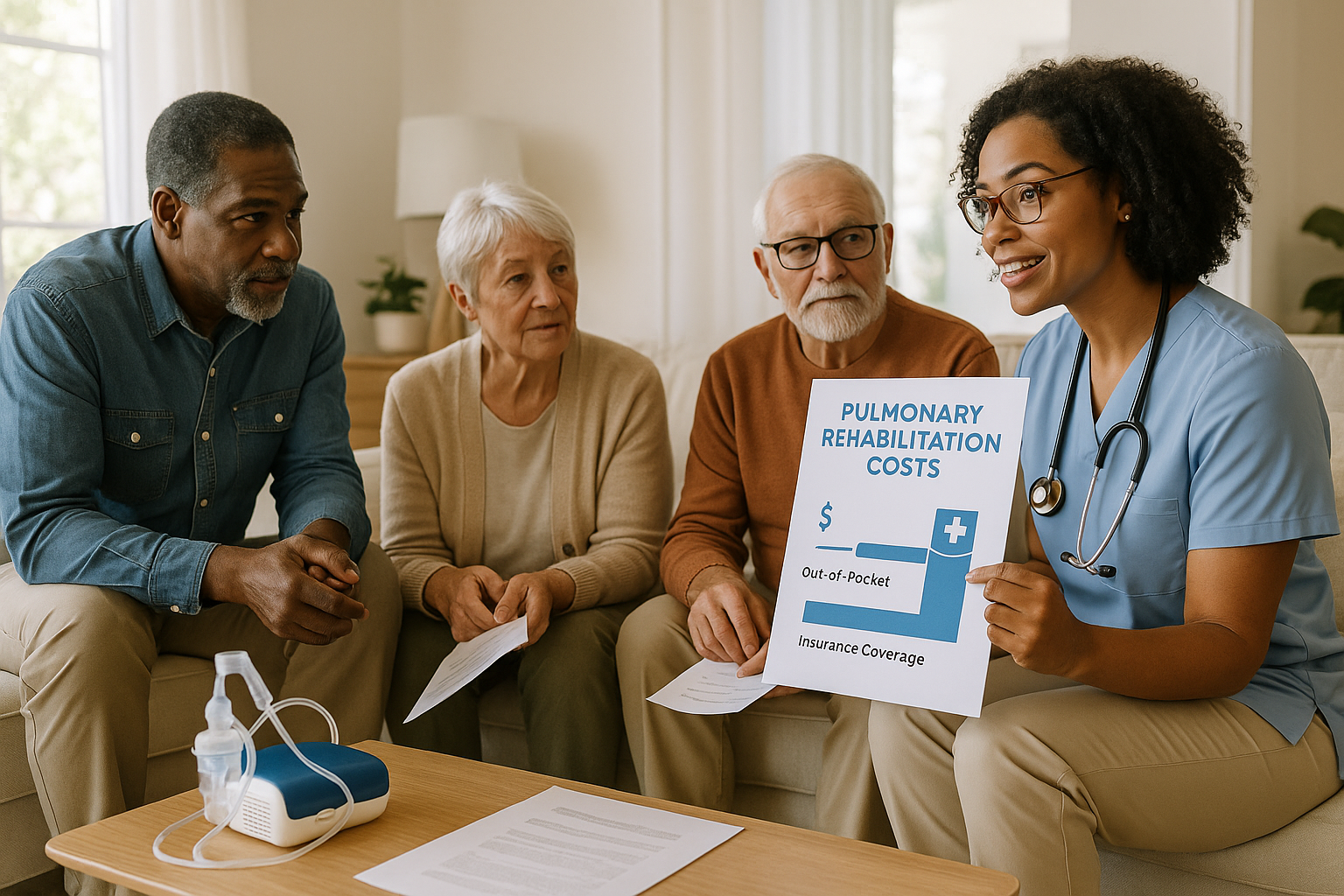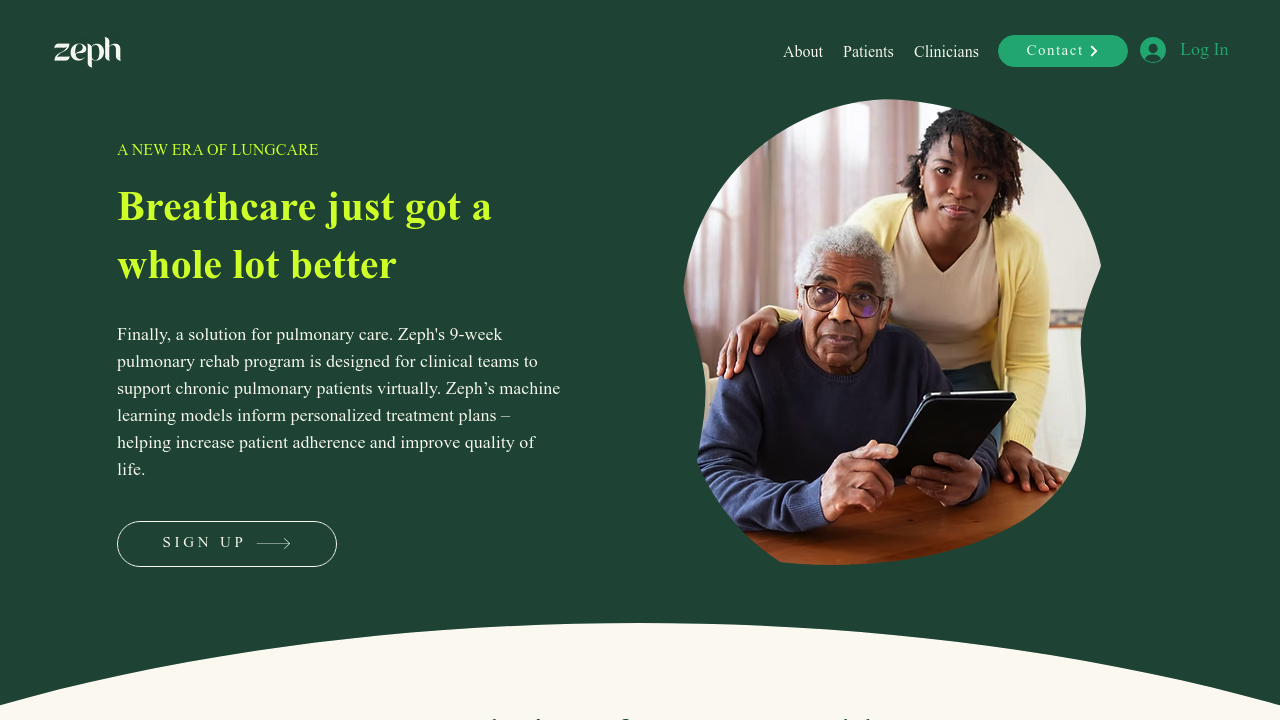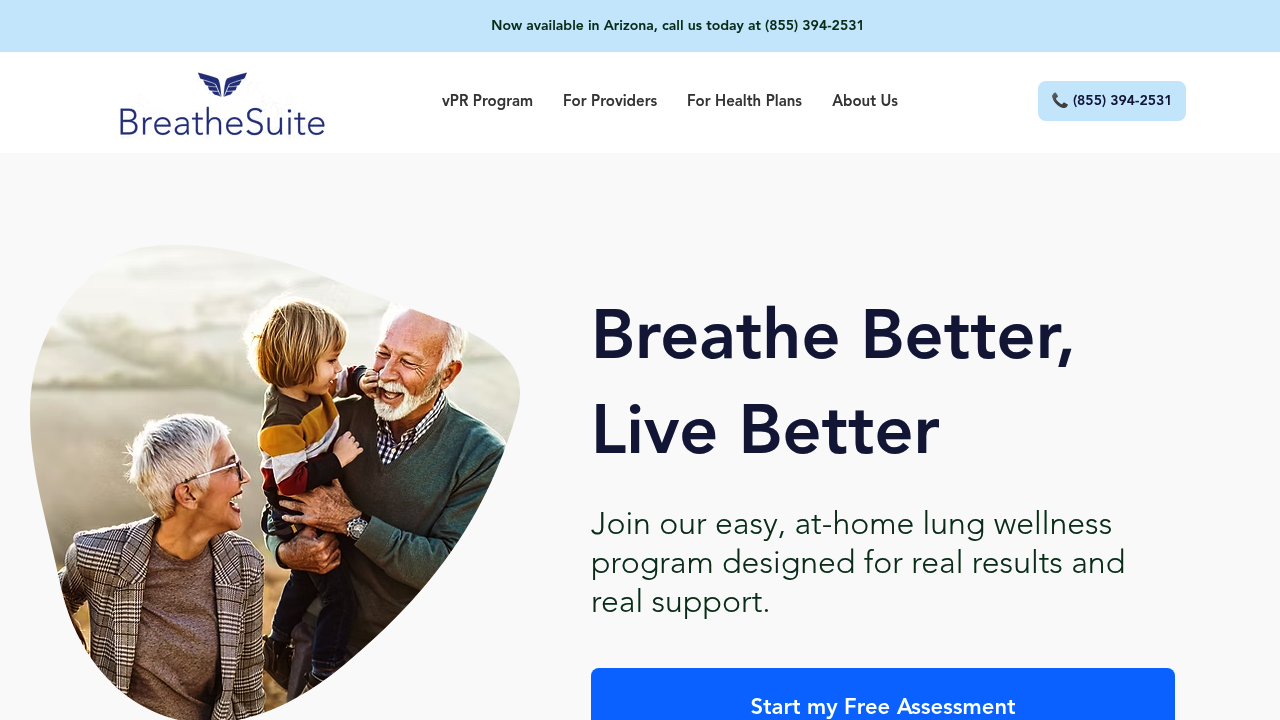Pulmonary rehabilitation can improve life for those with lung conditions, but understanding the costs is key. Here's what you need to know:
- Cost per session: $40–$172, with total program costs ranging from $480 to $6,192 for 12–36 sessions.
- Additional expenses: Pulmonologist visits ($260–$372), portable oxygen ($1,582), or BiPAP devices ($675).
- Insurance coverage:
- Out-of-pocket costs: Uninsured patients could pay $1,440–$12,384 depending on program length.
- Ways to reduce costs: Financial assistance programs, sliding scale fees, payment plans, and nonprofit support are available.
Planning ahead and leveraging financial resources can make pulmonary rehabilitation more affordable.
How Much Does Home Oxygen Therapy Cost for COPD Patients? | COPD Care Collective
Insurance Coverage for Pulmonary Rehabilitation
Pulmonary rehabilitation (PR) programs are often covered by major insurance plans when deemed medically necessary. Understanding your insurance benefits can help ease the financial burden of these treatments.
Medicare Coverage for Pulmonary Rehabilitation
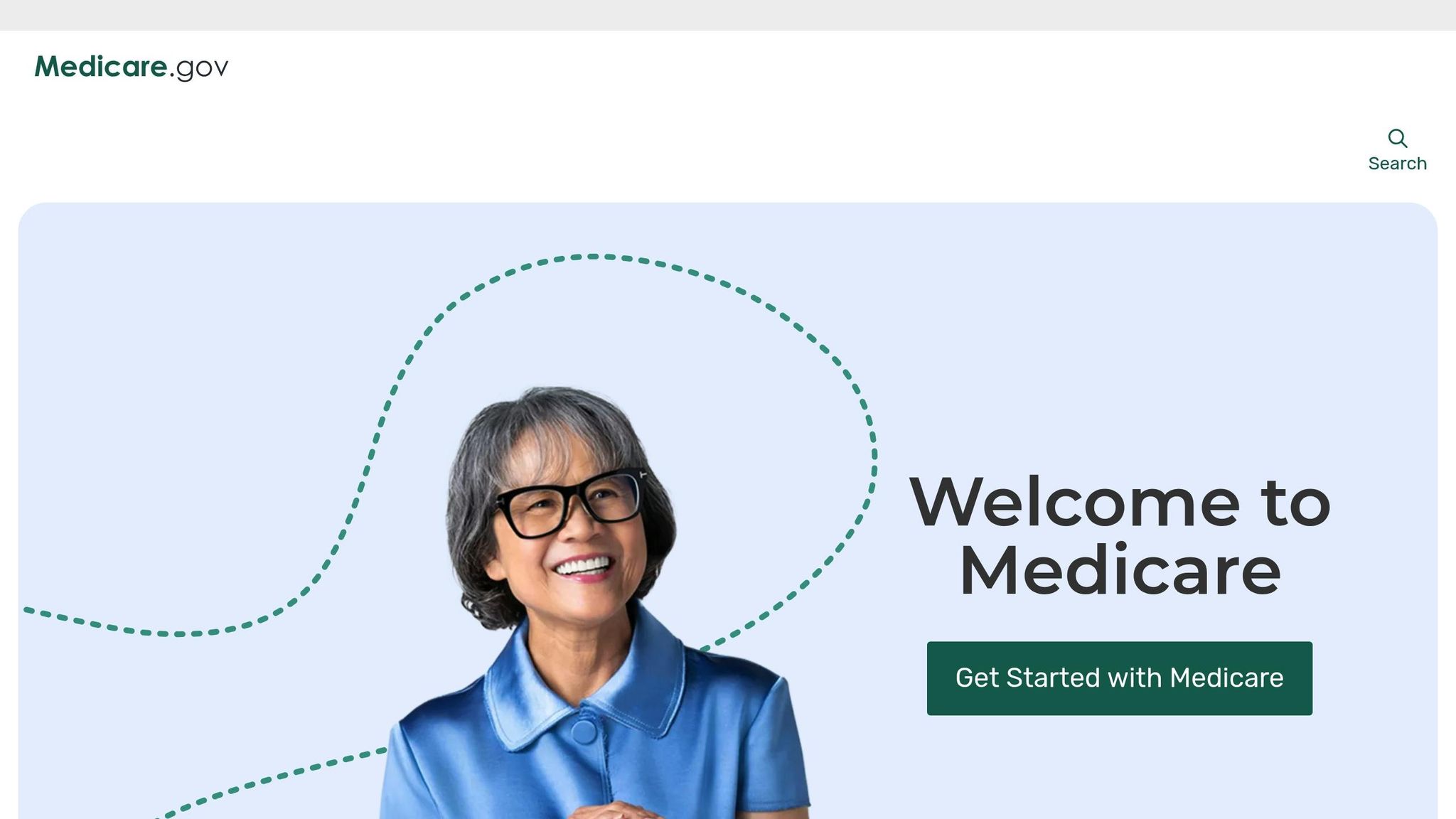
Medicare Part B provides coverage for pulmonary rehabilitation if you have moderate to very severe COPD or ongoing respiratory issues due to COVID-19[3]. To qualify, you'll need a referral and proper documentation from your doctor.
Medicare typically covers up to 36 sessions, with the option for an additional 36 sessions if your doctor provides medical justification. Here’s what you’ll need to budget for:
- Annual Part B deductible: $257 in 2025
- Coinsurance: 20% of the Medicare-approved amount per session
- Additional copayment: If treatment is received at a hospital outpatient department[3][5]
For instance, if a session costs $150 after meeting your deductible, you’d pay $30 (20% coinsurance), while Medicare would cover the remaining $120.
Telehealth PR services are covered for all patients through September 30, 2025. After that, coverage will be limited to rural or specially designated areas[3][4].
To ensure coverage, confirm your COPD diagnosis and staging with your doctor. Using the GOLD classification system (stages II–IV) is often required. Your physician must submit the necessary documentation to a Medicare-approved provider. If your claim is denied, you can appeal with additional supporting documentation[3].
Medicaid Coverage by State
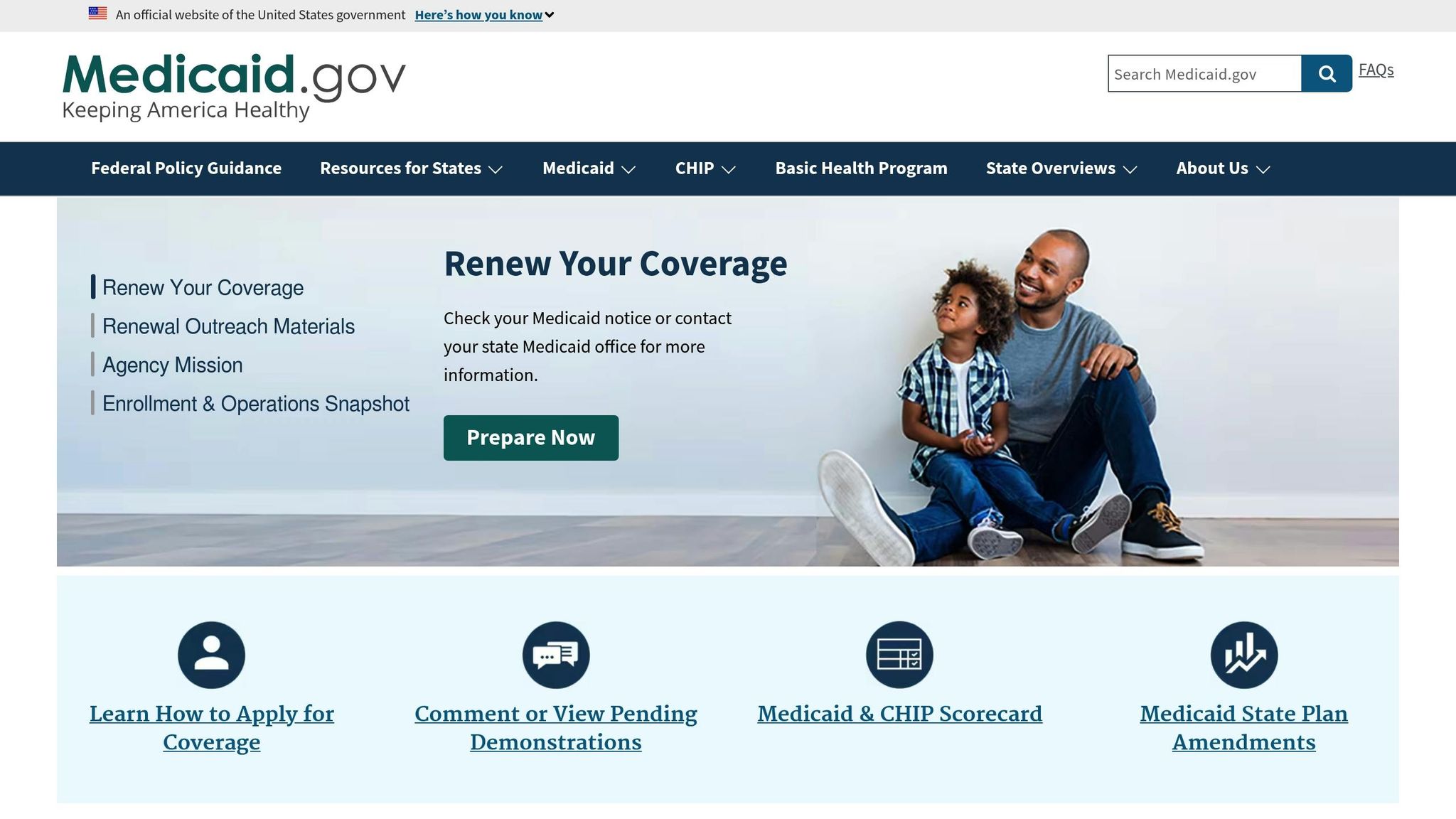
Medicaid coverage for PR varies depending on your state’s policies and whether it has expanded Medicaid under the Affordable Care Act (ACA). Medicaid expansion has improved access to chronic disease care for low-income adults, but not all states have participated[7].
In states that expanded Medicaid, eligibility limits increased to 138% of the federal poverty level for childless adults. For example, states like Arizona, Iowa, New Jersey, and Washington implemented this expansion on January 1, 2014. After expansion, uninsurance rates among hospitalized patients with respiratory conditions, such as asthma and COPD, dropped significantly - from 12.3% to 4.4%[7].
In states that did not fully expand Medicaid, like Nebraska, North Carolina, and Wisconsin (which implemented a limited expansion up to 100% of the federal poverty level), improvements were smaller. Uninsurance rates in these states decreased from 10.6% to 8.8%[7]. Most northeastern and western states opted for expansion, while many southern and southeastern states did not[7].
To confirm your Medicaid coverage, contact your state’s Medicaid office. Coverage specifics, such as pre-authorization requirements and out-of-pocket costs, can vary widely. Always check local eligibility rules before beginning treatment[6][7].
Private Insurance Coverage for PR
Private insurance plans also cover pulmonary rehabilitation, but requirements and limitations can differ. Most insurers mandate that PR be medically necessary. For instance, Aetna covers outpatient PR for patients with chronic pulmonary disease, dyspnea, reduced exercise tolerance, or persistent symptoms despite proper management[8]. They also extend coverage for PR as part of lung transplantation treatment[8].
Pre-authorization is often required, so review your plan details and secure any approvals before starting treatment. Coverage is typically limited to in-network providers, which can impact costs.
Some private insurers impose additional restrictions. For example, Aetna does not cover repeat PR programs unless tied to lung transplantation or lung volume reduction surgery[8]. Be sure to review your benefit plan for details on coverage limits, especially for short-term rehabilitation therapies.
When choosing a program, ask providers about their staff qualifications, treatment approach, available equipment, and patient success rates. This ensures you select a quality program that aligns with your insurance requirements. If your claim is denied, you can appeal with documentation from your healthcare provider or advocate[3].
Out-of-Pocket Costs and Billing
Insurance often covers many aspects of pulmonary rehabilitation, but there are still potential extra costs to consider. Knowing what out-of-pocket expenses to expect can help you plan your budget effectively. Even with insurance, additional fees might apply.
Costs for Uninsured Patients
If you're uninsured, the cost of a single session typically ranges from $40 to $172, with the national average landing at $106. A standard 36-session program could cost anywhere from $1,440 to $6,192, while extended programs with up to 72 sessions might reach $12,384[1].
Before starting treatment, it’s worth asking providers about their cash-pay rates and whether they offer discounts for uninsured patients. Many facilities provide reduced rates for those paying out-of-pocket. Having this information upfront can help you better prepare for the financial commitment.
How Bundled Payment Codes Work
Pulmonary rehabilitation services are billed using CPT codes 94625 and 94626 (replacing G0424). These codes combine various services - like exercise, education, and supervision - into a single fee. They’re linked to APC 5733, with Medicare reimbursing $58.34 per session[10].
To meet billing requirements, each session must last at least 31 minutes for one session or 91 minutes if two sessions are held on the same day[10]. While bundled payments simplify billing, they can make it harder to break down the costs of individual services or compare pricing between providers.
What Affects PR Costs
Several factors influence the overall cost of pulmonary rehabilitation, including location, facility type, program length, and your insurance plan.
Location plays a big role in pricing. Urban medical centers in areas like New York City or San Francisco tend to charge more due to higher overhead costs and staff salaries. On the other hand, rural hospitals or clinics often have lower rates.
Facility type also impacts costs. Hospital-based outpatient programs usually come with higher fees because of added overhead and facility charges. For instance, if you’re treated at a hospital outpatient department with Original Medicare, you may face an extra copayment in addition to the standard 20% coinsurance[3]. Independent clinics or community-based programs may offer more affordable options.
Program length and intensity directly affect total expenses. Medicare typically covers up to 36 sessions, but some patients may need an extended 72-session program, which could double out-of-pocket costs. Sessions billed with a KX modifier (sessions 37–72) may have different cost-sharing rules[10].
Your insurance plan structure is another key factor. Original Medicare beneficiaries pay 20% coinsurance after meeting a $257 annual deductible, while Medicare Advantage plans may have different copayment arrangements. Research suggests that higher out-of-pocket costs can discourage participation in these programs[9].
Additional services can also add to your expenses. Some programs offer extras like nutritional counseling, psychological support, or specialized equipment training, which may be billed separately. Don’t forget to factor in transportation costs, as travel is often cited as a barrier to attending center-based programs[11].
sbb-itb-3e96dba
Ways to Reduce Pulmonary Rehabilitation Costs
Pulmonary rehabilitation can be expensive, even with insurance. Thankfully, there are ways to make it more affordable. Many patients don't realize there are resources and programs designed to ease the financial burden of treatment.
Here are some strategies to help lower your out-of-pocket costs.
Financial Assistance Programs for PR
Several organizations provide financial aid specifically for pulmonary rehabilitation, significantly reducing expenses.
-
The Patient Access Network (PAN) Foundation offers a COPD copay assistance program. Medicare patients can receive a grant of $2,100 to cover medication costs. If additional funds are available, eligible patients may apply for more assistance within the same 12-month period, totaling up to $4,200 annually. To qualify, you must be undergoing COPD treatment, have Medicare, use medications listed by PAN, and meet income requirements (household income at or below 400% of the federal poverty level). U.S. residency is also required[18].
-
The Patient Advocate Foundation provides small grants to those meeting specific financial and medical criteria. These are awarded on a first-come, first-served basis, so applying early improves your chances[14].
-
Regional programs, like the Begin Again Foundation Southeastern Virginia Financial Aid Fund, offer one-time $1,000 grants for Southeastern Virginia residents diagnosed with conditions like Acute Respiratory Distress Syndrome (ARDS). These grants can help cover essentials such as rent, utilities, transportation, and food[14].
Additionally, many pharmaceutical companies and pharmacy chains run patient assistance programs (PAPs). These programs offer discounted or free medications to low-income or uninsured patients, helping to lower the cost of prescriptions tied to pulmonary rehabilitation[13].
When seeking financial aid, be cautious of scams. Legitimate programs will never ask for upfront payments.
Sliding Scale Fees and Payment Plans
Some providers use sliding scale fees to adjust costs based on your income, making pulmonary rehabilitation more affordable. Nonprofit and community-based programs often offer this option[16].
For example, a $5,000 program could drop to $0–$1,500 for low-income patients. In 2025, the Federal Poverty Level for a family of six in the 48 contiguous states and Washington, D.C., is $43,150[16]. Facilities such as Mat-Su Health Services Inc. offer sliding scale fees, and others may too, even if they don't advertise it[17].
To qualify, you'll likely need to provide proof of income, family size, and sometimes insurance information. Some centers prioritize underserved populations and may have more lenient requirements[16].
Payment plans are another option. These allow you to break the total cost into smaller monthly payments. Ask your pulmonary rehabilitation provider about both sliding scale fees and payment plan options - they are often willing to work with patients facing financial challenges.
Community and Nonprofit Support
Nonprofit organizations can provide resources to help with pulmonary rehabilitation costs. Their assistance often goes beyond direct financial aid to include guidance and connections to other services.
-
The American Lung Association's Lung HelpLine offers support for lung disease treatment plans and can connect you with local cost-saving resources[12].
-
211 is a nationwide service that helps you find local programs for housing, utilities, food, and more. By calling 2-1-1 or visiting 211.org, you can access services that free up money for medical expenses.
-
The Patient Advocate Foundation provides insurance navigation assistance, a directory of financial resources, and case management services to help you secure care[13].
State legislators or members of Congress may also know about local financial aid programs or grants. Reaching out to their offices could uncover additional resources[13].
Don't hesitate to discuss financial concerns with your healthcare provider. They might suggest less expensive treatment options, provide medication samples, or prescribe generic drugs to reduce costs[15].
With COPD-related costs in the U.S. reaching an estimated $32 billion in 2010, it's clear why so many programs have been created to help patients access care[15]. Using these resources can make a big difference, ensuring you get the treatment you need without breaking the bank.
How to Handle PR Costs and Insurance
Managing the costs of pulmonary rehabilitation involves staying on top of insurance details, addressing billing issues as they arise, and keeping organized records. By taking a proactive approach, you can help ensure your care remains both accessible and manageable.
Checking Insurance Coverage Before Starting PR
Before beginning pulmonary rehabilitation, it’s crucial to confirm your insurance coverage to avoid unexpected expenses. Start by contacting your insurance provider to clarify what your plan covers, including deductibles, coinsurance, and copayments [3].
Make sure your COPD staging is documented, and secure a doctor’s referral with the necessary paperwork. This step is particularly important because Medicare and other insurers often have specific requirements for pulmonary rehabilitation coverage [3].
If you’re on Medicare, find a Medicare-approved provider offering a program near you. Coverage is only available if the provider meets Medicare’s criteria. Additionally, check if telehealth options are covered under your plan [3].
Get all coverage details - such as prior authorization requirements, copayment amounts, and session limits - in writing. During your call with the insurance representative, take detailed notes, including the name of the person you spoke with and the date of the conversation.
For extra support, the American Lung Association Helpline can guide you in finding programs in your area and answering insurance-related questions [19].
Once you’ve confirmed your coverage, address any billing concerns directly with your healthcare provider.
Working with Providers on Medical Bills
Negotiating medical bills is a common way to reduce healthcare expenses. In 2023, 41% of Americans reported having medical debt, with many successfully lowering their bills through negotiation [20].
When you receive a bill, contact the billing department immediately to check for errors and discuss payment options. Acting quickly is key - once a bill is sent to collections, your ability to negotiate decreases significantly.
Start by requesting an itemized bill and comparing it to your Explanation of Benefits (EOB) to spot any errors, such as duplicate charges or incorrect amounts.
Ask about financial assistance programs. Many hospitals are required to offer charity care programs, yet 45% of nonprofit hospitals still bill patients who should qualify for this aid [20]. Don’t assume you’re ineligible - ask specifically about charity care or "ability to pay" programs.
It’s also helpful to research the insured rates for pulmonary rehabilitation services in your area. Knowing what insurance companies typically pay can give you leverage when negotiating. If your provider charges at least $400 more than the good faith estimate they gave you, you may have grounds to dispute the bill [21].
After negotiating, document all interactions to support any appeals or follow-ups that may be needed.
Keeping Records and Filing Appeals
Good documentation is critical when dealing with insurance appeals or applying for financial assistance. From the start, keep detailed records of every communication, bill, and phone call.
If your insurance denies a claim, review the denial notice carefully for instructions and deadlines. You’ll likely need a letter from your doctor explaining why the service was necessary. File your appeal within the specified timeframe. If the internal appeal doesn’t succeed, request an external review right away [22][25].
When writing your appeal letter, include the claim number, details about the denied service, evidence supporting your case, an explanation of your health condition, and why the service is medically necessary [25].
As Suzanne Garner points out:
"Never accept the first denial letter you get, because it is often just the default reaction to treatment protocols, especially if it's something new." [24]
Keep copies of everything you submit and follow up regularly to track the status of your appeal. If all else fails, you might consider consulting an attorney, but be aware that deadlines for legal action vary depending on your location [23].
Conclusion: Getting Access to Pulmonary Rehabilitation
Cost shouldn't stand in the way of accessing pulmonary rehabilitation. In 2020, COPD-related expenses reached a staggering $49.0 billion, with the average patient incurring $6,246 more in annual medical costs than others [2]. Understanding your financial options is key to managing these challenges.
Start by reviewing your insurance coverage. Whether you're covered by Medicare, Medicaid, or private insurance, it's important to know the specifics of your plan. For example, Medicare Part B covers pulmonary rehabilitation for moderate to very severe COPD patients with a doctor's referral. However, keep in mind that out-of-pocket costs and pre-authorization requirements may apply, so contacting your insurer early is essential [4][27].
If your insurance doesn't cover everything, there are financial assistance programs designed to help. The Assistance Fund, for instance, launched a COPD copay assistance program in May 2024. Similarly, the PAN Foundation offers medication copay support for eligible Medicare patients, and the HealthWell Foundation assists households earning up to 500% of the federal poverty level [28][18][29]. Danielle Vizcaino, President and CEO of The Assistance Fund, highlights the importance of these programs:
"People living with COPD should be focused on their health and wellbeing without the added worry of financial strain... With the support of our donors, our COPD Copay Assistance Program removes many of the financial barriers patients face in accessing the critical treatment they need." [28]
To further cut medication costs, explore manufacturer assistance programs, compare pharmacy prices, and use resources like SingleCare, NeedyMeds, or RxAssist. For example, short-acting bronchodilators can cost as little as $16 per month, while long-acting options range from $193 to $606 [2][12].
Advocating for yourself is another crucial step. Keep detailed records of all interactions with insurance companies, healthcare providers, and billing departments. If needed, negotiate payment plans or dispute billing errors. The American Lung Association's Lung HelpLine is also available to provide guidance on treatment plans and lung health questions [12].
For added convenience and affordability, tele-rehabilitation and home-based programs are expanding access to pulmonary rehabilitation [26]. With approximately 16 million adults in the U.S. diagnosed with COPD, you're not alone in navigating these challenges [18]. By combining a thorough review of your insurance, tapping into financial assistance, making smart medication choices, and being your own advocate, you can access the pulmonary rehabilitation you need to improve your quality of life.
FAQs
If you're wondering whether your pulmonary rehabilitation sessions are covered, the first step is to review your insurance policy or reach out directly to your provider. Many insurance plans, including Medicare Part B, provide coverage if you meet certain medical requirements. Private insurance and Medicaid might also cover these services, but the specifics can differ depending on your plan.
If you're still uncertain, request a detailed explanation of benefits (EOB) from your provider. You can also consult your pulmonary rehabilitation center - most have staff who can help verify your insurance coverage and explain any associated costs.
If your insurance denies coverage for pulmonary rehabilitation, there are steps you can take to challenge their decision. Start by filing an internal appeal with your insurance provider. Make sure to include key documents like your medical records and a letter from your doctor that explains why this treatment is necessary for your health.
If the internal appeal doesn’t work, you can move to an external review. This process involves an independent third party who will assess your case and determine whether the insurance company should reconsider its decision.
Still running into roadblocks? It might be time to connect with a patient advocate or seek advice from a legal professional. These experts can guide you through the appeals process and help ensure that your rights are upheld.
Yes, there are programs available to help offset the cost of pulmonary rehabilitation. Groups like the American Lung Association and the Patient Advocate Foundation offer a range of support, including financial assistance, grants, and other resources for those who qualify. On a local level, some nonprofits and community health organizations might provide sliding scale fees or flexible payment plans to make these services more accessible.

